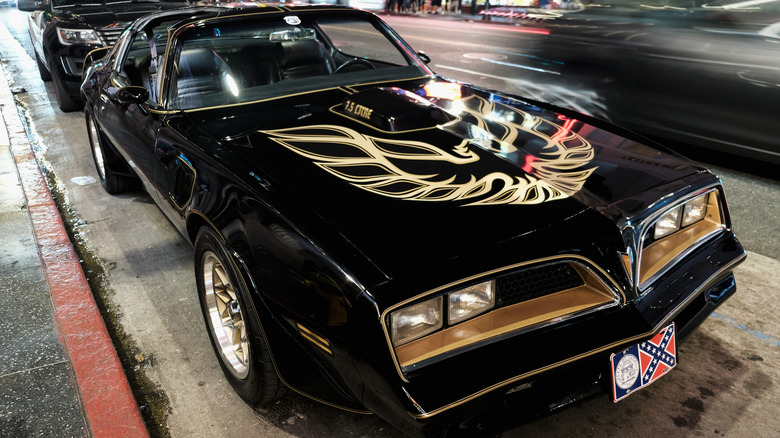The Iconic Firebird Logo: A Legacy of Controversy and Popularity
The giant bird logo on the hood of the Pontiac Firebird has long been a subject of debate and even ridicule. Some observers have mistaken it for a hawk or eagle, while others have jokingly referred to it as the “screaming chicken.” However, this emblem is actually a representation of the mythical Firebird, a symbol that has appeared in various forms in Native American art.
Initially, Pontiac described the logo as the “Trans Am hood decal” when it was introduced as a $55 option in 1973. Later, it was rebranded as the “giant Firebird decal.” This iconic design became closely associated with the 1977 Trans Am featured in the film Smokey and the Bandit, where it gained widespread recognition.
The Origin and Evolution of the Design
The creation of the Firebird hood graphic involved years of development and input from some of General Motors’ most influential figures. It all began in 1970 when GM designer Norm Inouye sketched the original version at the request of his boss, Bill Porter. Inouye designed the logo so its wings would wrap around the Trans Am’s hood scoop, aiming to integrate the feature seamlessly into the car’s overall look. However, GM design chief Bill Mitchell found the design too gaudy.
In late 1971, John Schinella took over from Porter and was determined to revamp the Firebird’s appearance. Known for testing prototypes around town to gauge public reaction, Schinella found that early versions of the bird logo attracted excited crowds in parking lots. This positive response led Pontiac to begin offering the graphic to buyers in 1973, and its eventual popularity helped solidify the Firebird’s status as a muscle car legend.
The Legacy of the “Screaming Chicken”
Despite the initial mockery, the term “screaming chicken” has become part of the Firebird’s legacy. Fans and critics alike have embraced the nickname, and it now stands as a defining characteristic of the model. Over time, the design of the Firebird hood logo evolved subtly. By 1976, all Special, Anniversary, and pace car edition Trans Ams featured the graphic as a badge of honor. The size of the logo also increased during these years, with the original design measuring 44.5 inches tall and 45.5 inches wide, while the 1978 version stretched to 55 inches tall.
New colors, more detailed feathers, and changes in the orientation of the bird’s head kept the logo looking fresh throughout the years. The gold bird logo on the “Smokey and the Bandit” Trans Am remains one of the most recognizable and collectible versions of the Firebird, making it a highly sought-after model among enthusiasts.
Influence on the Automotive Industry
The Firebird’s hood logo was so successful that other automakers soon adopted similar ideas. For example, Ford introduced a large snake graphic on the 1978 King Cobra Mustang. However, as the 1980s progressed, consumer tastes changed, and the decal gradually shrank in size. Pontiac eventually stopped offering the logo after 1987. Although GM shut down the Pontiac division as part of its 2009 bankruptcy reorganization, the failure of the brand had nothing to do with the “screaming chicken” logo.
The Enduring Impact of the Firebird
Today, the Firebird remains a symbol of American muscle car culture, with its iconic hood logo continuing to capture the imagination of car enthusiasts. From its controversial beginnings to its lasting legacy, the Firebird has left an indelible mark on automotive history. Whether viewed as a bold statement or a quirky design choice, the “screaming chicken” continues to be a key part of the Firebird’s identity.







